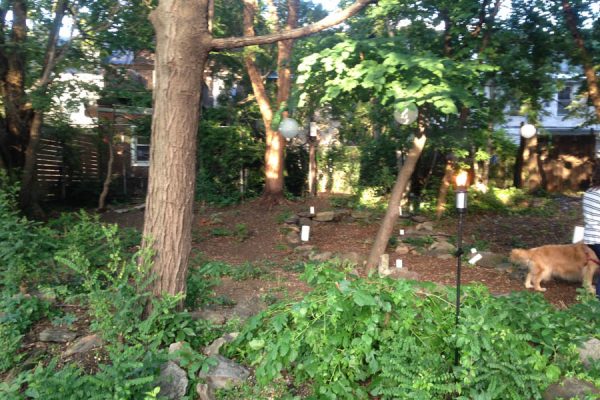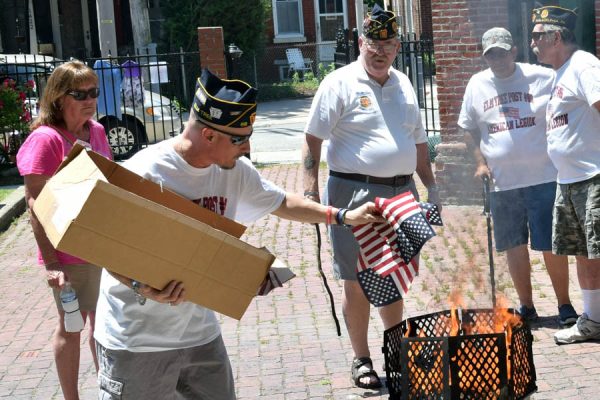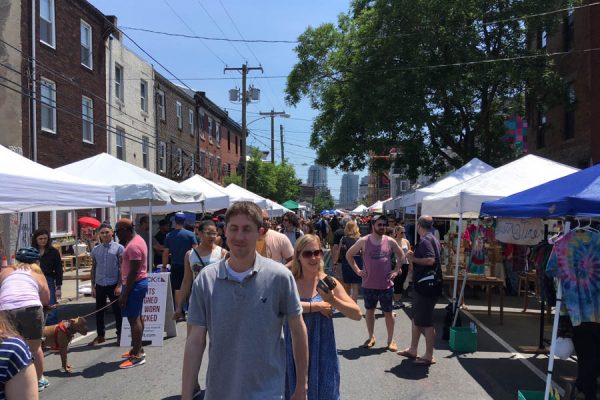Consider for a moment the humble stoop. Often overlooked and—if you’ll pardon the pun—stepped over when discussing housing architecture, these stairs a few steps short of a case are part of the uncapturable essence of what gives a neighborhood its character. While it’s impossible to say that any neighborhood’s architecture is completely unvaried, there are definite identifiable trends that become obvious on even a cursory stroll through our communities.
More than just providing homogeneity to the urban landscape, these stoops are the last bastion of everyday neighborly socializing. Saying “hello” to someone stepping out for a cigarette, commenting on how good the smoke from the barbecue smells as you pass by, noticing an especially impressive flowerpot that’s caught your eye all week—these seemingly insignificant interactions are how neighborly relations are made, something that is increasingly rare in the isolating digital world we live in. Stoops are what separate the urban from the suburban, creating the essential city experience that many are relocating to Philadelphia in search of and many lifers pride their neighborhoods on.
It doesn’t take much to make a stoop a stoop: Just a couple stairs, maybe an aluminum awning or small ornate handrail. Each River Ward has its own unique style of architecture, making them easy to distinguish to the keen observer. These differences subtly affect neighborhood culture, shaping the way all of our lives play out in the Riverwards.
The residential areas in Port Richmond and Bridesburg are dominated by porches that have ample space to simply hang out. Shaded from the sun by aluminum awnings, they are some of the best places to be outside now as the weather begins to heat up. It’s also no surprise that some of the tightest neighborly bonds in the Riverwards are found here. I would argue that there is a direct correlation between the ample space to relax with your neighbors in public and the tight community bonds present in these neighborhoods.
Bridesburg also has a strong showing of small front yards, providing even more room for residents to relax and socialize with their neighbors. Again, the impact of an area for people to see and be seen by the neighbors on the block on neighborhood unity cannot be emphasized enough.
The classic Northern Liberties stoop is a 3-step concrete or marble walk-up with a metal rail. Oftentimes they are accompanied by a small awning protecting the steps from getting wet and gathering ice in the wintertime. This is the style that dominates the landscape of Fishtown, Kensington and large swathes of Philadelphia as well. These areas have their own characteristics that lend a bit of local flavor to the stoop as well. Many houses in Northern Liberties have small windowsill gardens built into the house, something that many neighbors add to with flowerpots once the weather starts to get nice.
Kensington seems to have an unusually high number of personal light posts, and the careful observer may notice the occasional boot scraper next to the stoop. These were used to scrape the manure off the boots back in the days when horses were used for more than just carrying tourists around Olde City, speaking to the industrial history of the neighborhood.
Fishtown, somewhat predictably, has made its own unique mark of distinction with signs of American shads, once the backbone of the neighborhood’s economy.
While they may not provide as much room as the spacious porches and lawns of some of the other Riverwards, they still serve the same purpose, providing a staging area for social interactions between neighbors. Even if all they do is facilitate a simple “how you doin’” while you pass by, it’s the start of a friendly relationship that could continue for years, even decades, into the future.
The Riverwards, especially Northern Liberties and Fishtown, are experiencing an unfortunate trend where the brick row homes that make up the bulk of the residential housing are being replaced by unsightly, boxy, “tetris” houses. Most of these houses empty directly onto the street, or have a large slate slab as the lone step. The sense of “stoopness” is completely gone in these houses. There’s no place to sit in the shade or staging area for conversation between neighbors. While to many loitering outside is a sign of urban blight, the implication being that pedestrians will be intimidated by groups of locals, there are strong arguments saying that the opposite is true. The Life and Death of Great American Cities by Jane Jacobs, a classic critique against the wave of city-planning that gained traction in the ‘50s, argues this case, saying that this forms an, “intricate, almost unconscious, network of voluntary controls and standards among the people themselves, and enforced by the people themselves.”
While in some sense this new development is a sign of good things to come, it comes with an intangible cost as well, something that many Riverwards lifers are already noticing. The neighborly bonds that tie neighborhoods together are disappearing before our eyes. People don’t say “hello” to their neighbors as they pass them on the street. Many couldn’t tell you the first name of even one person that lives on their block. These new, ugly houses are just as responsible for the disintegration of neighborly bonds as anything else.
So let us celebrate the stoop and give it the recognition it deserves. Without them, it is doubtful that Philadelphia would have the sense of a “city of neighborhoods” that so many lifers love and that draws so many new residents to the city every year. So the next time it’s sunny out, join me on the stoop, enjoy a cold beverage of your choosing, and say hello to the neighbors—Philly won’t be Philly if we don’t.
Photos By Joshua Albert











